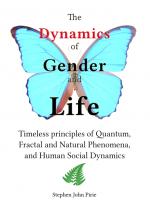By coincidence I've only recently (namely, this morning) come across a 1991 paper by Prof. Robert Jahn of Princeton's famous PEAR laboratory.
Jahn's paper is quite extraordinary, at least for me, for it covers many of the basic concepts that I wrote about in my book Be and Become.
One of the central points of Jahn's paper is that not understanding the complementarity of 'masculine' and 'feminine' fuels "immensely destructive" behaviours and results, both personally and socially. From Jahn's paper:
When posed in polar opposition, whether within a single personality, or in the context of the ubiquitous interactions between the male and the female sexes, the failures of this interface are legion, legendary, and immensely destructive, both personally and socially. Yet, when deployed in constructive complementarity, the masculine/feminine integration within the individual can enable the highest creativity and personal satisfaction, and in the male/female partnership can generate some of the highest accomplishments, profoundest insights, and most beautiful resonances of human existence. In this form, it is probably the species' most powerful resource for spiritual as well as physical survival and evolution.
Why I concur with Jahn is that the deeper nature of what 'feminine' and 'masculine' actually mean is not widely understood or appreciated.
